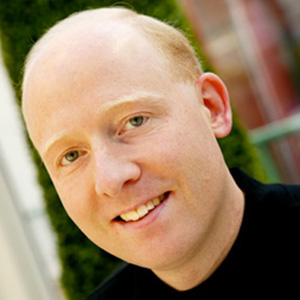Like many of us, Peter Morville started out with a liberal arts degree (in this case, English) and no idea what he wanted to do. He learned to code in his spare time, and discovered the field of Library Science when he stumbled across a dusty old book in his public library. Alchemy happened, and he found himself teaching people how to use the internet for business. He got fascinated with the idea that information needs a blueprint, and that something interesting was happening between the pages of every web site. This led to the famous ‘Polar Bear Book,’ as us insiders call it, which he co-authored with Lou Rosenfeld. In our interview, he talks about how he finally found a career that his parents didn’t laugh at.
EXCERPTS FROM THE INTERVIEW
One afternoon, I was walking through the public library, still searching for a career, and I came across this little old book called Careers in Library Science. I still remember pulling it off the shelf, dusting it off, and flipping through it. I had never thought about how a library worked. I don’t think I had ever asked the reference librarian a question. As I was reading through it and learning about this field of library and information science, it occurred to me there was some connection between the ways we have organized information in libraries, and what was happening in these online networks.
You can take any object, whether physical or digital, and ask questions like: what are all the ways someone might find this object, and how can we describe this object to make it more findable. You can also evaluate the findability of a system, asking: to what degree does this environment support search, navigation, retrieval, and wayfinding?
AN INTERVIEW WITH PETER MORVILLE
Conducted by Tamara Adlin on June 15, 2008 05:46 AM
Peter has written some of the most popular and exciting books in our industry. But, before the Polar Bear and the Lemur, he started out just as unsure of what to do with his life as any of us.
He is widely recognized as a father of information architecture and serves as a passionate advocate for the critical role of findability in defining the user experience.
He wrote Ambient Findability: What We Find Changes Who We Become which is a great and recent book that everyone should read. He also is the co-author (with Louis Rosenfeld who I am going to be talking to in a couple of days) of the best-selling book, Information Architecture for the World Wide Web: Designing Large-Scale Web Sites
which sold over 120,000 copies.
It was first published in 1998 which was pretty early, given what it’s about.
Hello!
One of the first questions I start with is: what were you really interested in when you were young or in school that got you started on the path you ended up on.
I graduated from my undergraduate university with an English degree and had absolutely no idea what I wanted to do in the future. I did have some vague idea of going into management in some big company in California but thankfully that never happened.
Every week, I would discover a new career, and I’d come home and tell my parents, ‘I’m going to be a hospital administrator,’ and they would laugh at me. Then I’d go search for a new career.
Because I had some time on my hands, I began to learn computer programming. My younger brother was a real computer science whiz and he helped me get started. I also began exploring the early computer bulletin board systems such as Compuserve, AOL, Genie, and Prodigy. I kept signing up for the free trial periods, over and over again.
One afternoon, I was walking through the public library, still searching for a career, and I came across this little old book called Careers in Library Science. I still remember pulling it off the shelf, dusting it off, and flipping through it.
I had never thought about how a library worked. I don’t think I had ever asked the reference librarian a question. As I was reading through it and learning about this field of library and information science, it occurred to me there was some connection between the ways we have organized information in libraries, and what was happening in these online networks.
I became interested in the field and ended up applying to some library and information science programs, and I selected the University of Michigan.
I do remember back then, reading books like William Gibson’s Neuromancerand Cyberspace: First Steps by Michael Benedikt, and getting very excited about the idea of cyberspace. That vision was in my head somewhere.
So, I went out to library school. One of the first people I met up with was Lou Rosenfeld who was really the Internet guy at the University of Michigan at the time, and one of the only people who really was excited about the Internet’s potential to reinvent library science. Many of the faculty were very skeptical. I remember some of them refused to use email.
I ended up collaborating and working with him. When I graduated, Lou and I and Joe Janes, a faculty member who went on to found the Internet Public Library, decided to work together on this company called Argus Associates, and focus on Internet training and design.
We were mostly trying to make money teaching people how to use the Internet back in the days of Gopher and Archie and Veronica, what we would think of now as crude tools for information organization and access. We also did a bit of design work, again very crude, helping people to build Gopher sites – textual, hierarchical information systems – and very early websites, before Mosaic made the Web a visual medium, using text-based Web browsers like Lynx.
Then, I think in 1994 when Mosaic took off, we began getting involved in what we would think of today as web design.
I still remember the very early days from 1994 to 1995 when the Internet started to take off. It was so exciting to see some mainstream recognition that this whole Internet thing just might be important.
I recall one event in particular. Lou and I went to give a talk about how to use the Internet for business at a conference in Chicago. This was the first time I ever spoke in front of a microphone. We arrived and were told by the event director that they had to move us to a new room because there was quite a big turnout.
We soon found ourselves in a room with more than 800 people who had come to learn how to use the Internet for business. It was terrifying. Over the next few years, Internet conferences continued to draw huge audiences and mainstream media attention. It was a very exciting time.
I became an amateur graphic designer, and we were doing all the coding as well as the organization of the information. But we kept asking: how can we focus on our core competencies and what are we best at? How do we apply this background in library and information science to the Web environment?
Fairly quickly, we decided to partner with some other companies – with a graphic design firm and with a technology and development firm – so that we could focus on structuring and organizing and labeling information.
Around that time, we happened upon this notion, this metaphor of architecture, really as a way to describe to prospective clients what we were doing.
We would say, “Look, you know you need visual design. You know you need technology. What you may not know is that you need a plan, you need blueprints, you need a structure, you need to think about how people will move around in this space.”
We started writing the Web Architect column for Web Review Magazine, one of the first online magazines, put out by Songline Studios, a subsidiary ofO’Reilly Media.
Then, in 1996, a copy of Richard Saul Wurman’s book, Information Architects, appeared in our offices. I remember reading through it and liking the term information architecture, which was broader than web architecture.
And, I remember thinking: ‘I like this book, but it’s not about information architecture, it’s about information design.’ Information architecture is not so much focused on how we design two-dimensional pages as it’s about the multi-dimensional relationships between pages that compose a site or system. But, I do think that book was the catalyst for selecting the term, information architecture.
A friend, Lorrie LeJeune, who worked for the University of Michigan Press, then went to work with O’Reilly & Associates (now O’Reilly Media). When Lou first pitched the idea of a book on information architecture, she didn’t really get it and didn’t see a market for it.
But Lou kept bugging her. And, while attending Internet trade shows, she began hearing people describe the need for something they didn’t have a name for, and she realized information architecture was probably it. Lorrie became our champion inside O’Reilly and got us on board to write the polar bear book.
I became excited about focusing on findability back at an information architecture summit. I was trying to think about what I wanted to talk about. I was sick of talking about information architecture, and I realized I was tired of apologizing for our focus on helping people to find what they need.
We would hear again and again from people within the user experience design world that ‘it’s not just about findability.’ While I’ve always agreed that design has to be much broader in reach than just the findability focus, I think that within the realm of the Web, helping people find what they need is a huge challenge and much broader than information architecture.
To really tackle findability challenges for a company, you have to bridge design, engineering and marketing, and think about it more holistically.
Folks like Jakob have done an amazing job of getting that word usability into everybody’s heads, and I’ve been on a campaign to do the same with findability.
You can take any object, whether physical or digital, and ask questions like: what are all the ways someone might find this object, and how can we describe this object to make it more findable. You can also evaluate the findability of a system, asking: to what degree does this environment support search, navigation, retrieval, and wayfinding?
That leads into the title of the book, Ambient Findability, which looks well beyond the Web toward the intersection of ubiquitous computing in the Internet where we are designing experiences that bridge the physical and digital world. Ambient Findability refers to a world in which we can find anyone or anything from anywhere at anytime. It’s not necessarily a goal, and we’ll never quite reach the destination, but we’re surely headed in that general direction.
For people who want to hear more from Peter, you can follow hisblog. And, as a founder and past president of the IA Institute, he’s still active in that community. He’s also a member of ASIS&T which puts on the annual IA Summit.


 © 2020 Adlin Inc. All Rights Reserved.
© 2020 Adlin Inc. All Rights Reserved.